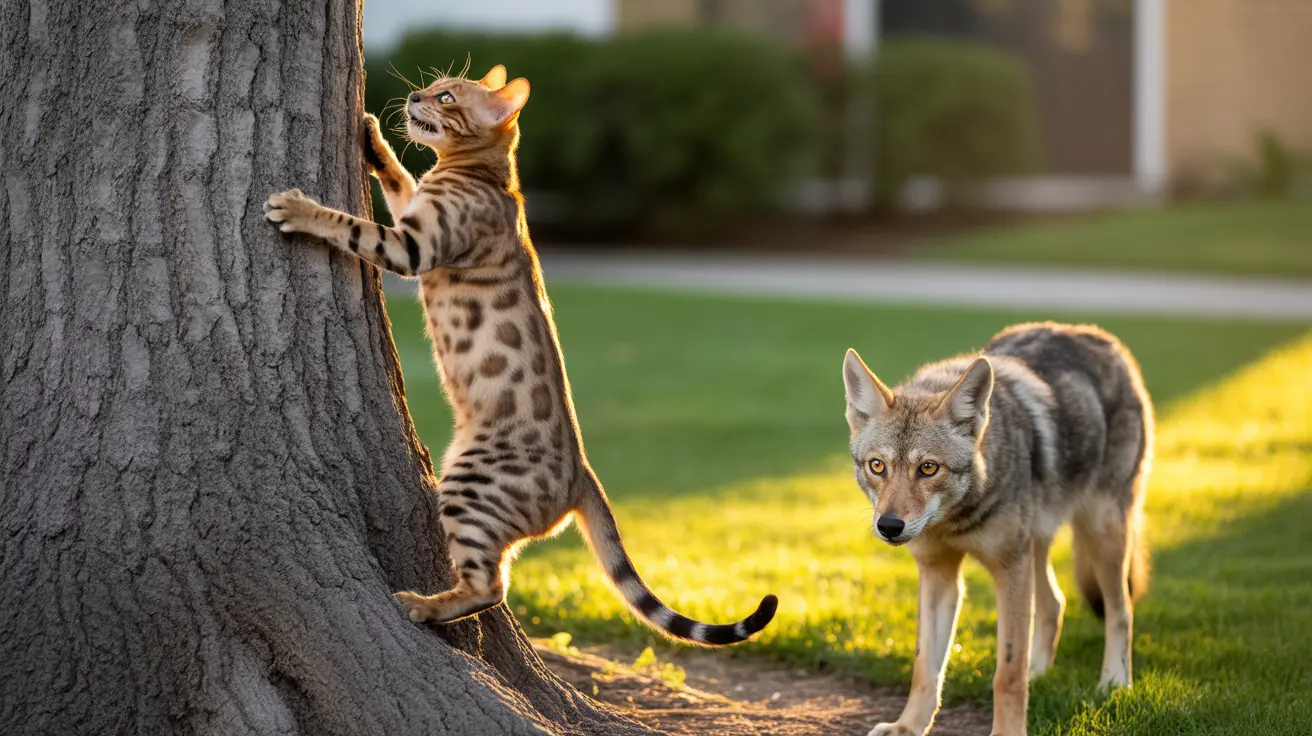When it comes to protecting our feline friends from wildlife threats, understanding the speed difference between cats and coyotes is crucial. Many cat owners wonder if their pets can outrun these wild predators in dangerous situations. The answer might surprise you – and it's essential information for keeping your cat safe.
As urban and suburban areas expand into natural habitats, encounters between domestic cats and coyotes are becoming increasingly common. Let's explore the speed capabilities of both animals and what this means for cat safety.
Speed Comparison: Cats vs. Coyotes
Domestic cats and coyotes have significantly different speed capabilities. While house cats can reach impressive speeds of up to 30 mph (48 km/h) in short bursts, coyotes are considerably faster, capable of running at speeds up to 40 mph (64 km/h). This speed advantage, combined with superior endurance, makes coyotes formidable predators that cats cannot outrun in a straight chase.
Beyond raw speed, coyotes also possess greater stamina, allowing them to maintain their pursuit for longer distances. Cats, however, are built for quick sprints and agility rather than sustained running.
Physical Capabilities and Survival Strategies
Despite being slower than coyotes, cats have evolved several defensive advantages that can help them survive encounters:
- Exceptional climbing ability
- Superior agility and quick directional changes
- Ability to squeeze into small spaces
- Sharp claws for defense and climbing
- Keen night vision and sensory awareness
These adaptations often prove more valuable than raw speed when escaping predators like coyotes.
Protecting Your Cat from Coyote Encounters
Given that cats cannot outrun coyotes, prevention becomes the key to safety. Here are essential protective measures:
Outdoor Safety Measures
- Keep cats indoors, especially during dawn and dusk
- Install coyote-proof fencing at least 6 feet high
- Create secure outdoor enclosures or "catios"
- Remove outdoor food sources that might attract coyotes
- Install motion-activated lights and sprinklers
Environmental Modifications
Make your property less attractive to coyotes by:
- Securing garbage containers
- Eliminating potential hiding spots
- Maintaining well-lit yards
- Trimming dense vegetation
- Installing deterrent devices
Frequently Asked Questions
Are domestic cats faster than coyotes, and how does their speed difference affect safety?
No, domestic cats are not faster than coyotes. Coyotes can run up to 40 mph, while cats max out at around 30 mph. This speed difference means cats must rely on other survival strategies like climbing or hiding rather than outrunning coyotes.
What are the best ways to protect outdoor cats from coyotes in suburban areas?
The most effective protection methods include keeping cats indoors, creating secure outdoor enclosures, installing tall fencing with rollers, using motion-activated deterrents, and eliminating food sources that attract coyotes to your property.
How do the hunting and survival strategies of coyotes compare to those of domestic cats?
Coyotes are endurance hunters that use pursuit tactics, while cats are ambush predators built for short bursts of speed. Coyotes often hunt in pairs or packs, whereas cats are solitary hunters relying on stealth and agility.
Can a cat's climbing ability help it escape from a coyote attack?
Yes, a cat's ability to climb trees, fences, and other vertical surfaces is one of its most effective defense mechanisms against coyotes, as coyotes cannot climb as well as cats.
What are effective coyote deterrents to keep cats safe when outdoors?
Effective deterrents include motion-activated lights and sprinklers, noise makers, secure fencing with coyote rollers, and maintaining a clean yard free of food attractants and hiding spots.
Remember, while understanding the speed difference between cats and coyotes is important, the best protection is prevention through responsible pet ownership and creating a safe environment for your feline companion.






